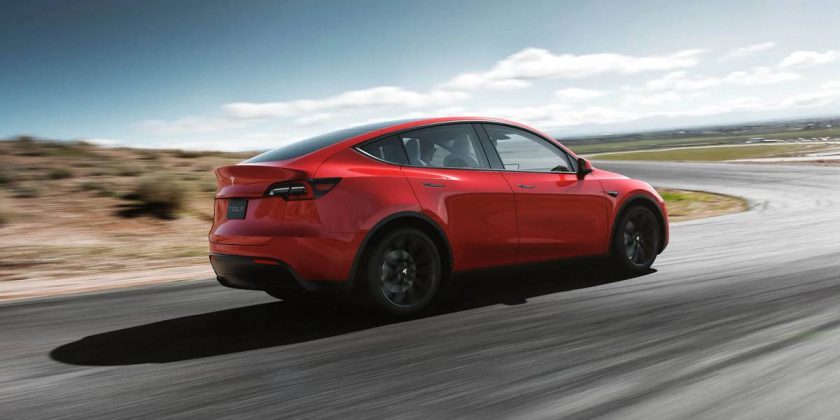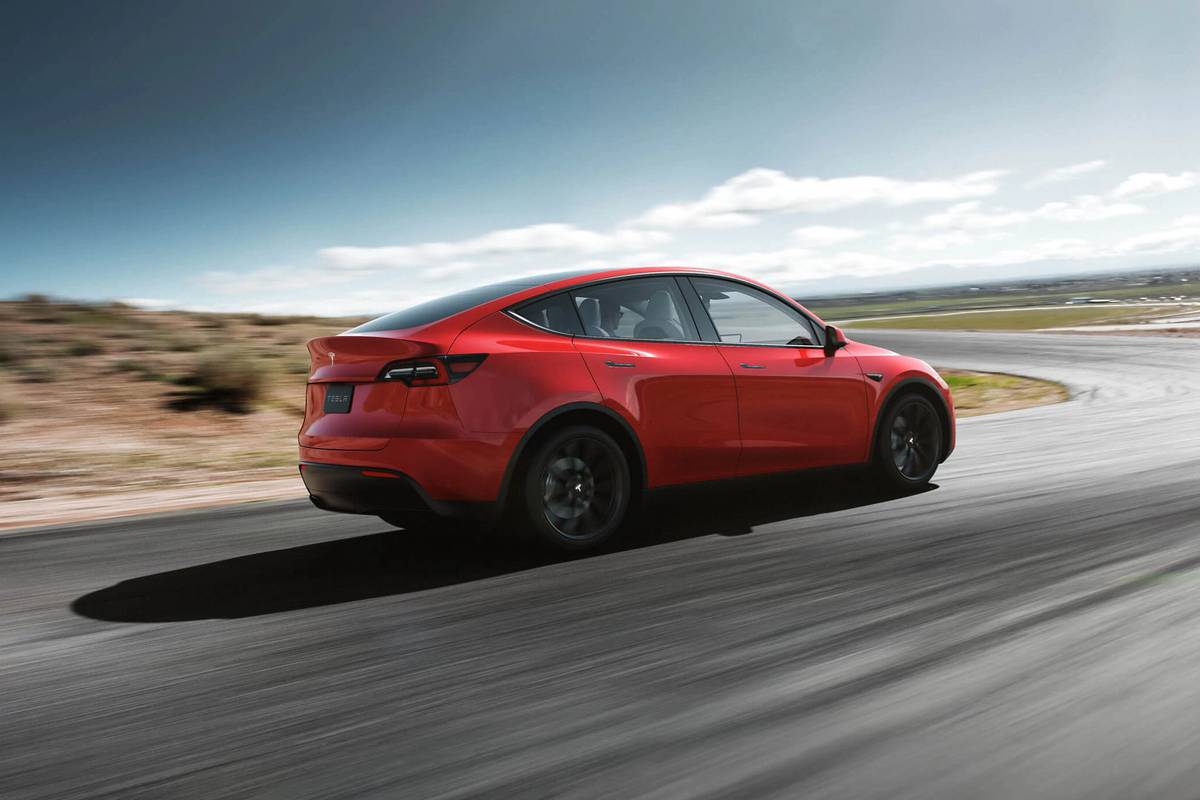The verdict: Families looking for a somewhat affordable Tesla should consider the Model Y. The compact SUV can be had with either five or seven seats, courtesy of an optional third row. Our test vehicle had just two rows of seats and handled child-safety seats reasonably well.
Does it fit three car seats? No.
Take a look at how the Latch system and each car seat scored below in our Car Seat Check of the 2021 Tesla Model Y.
Related: Search Car Seat Checks
A Grade
- Infant seat: In many of our car-seat installations, the rear-facing infant seat can be difficult to fit behind the front passenger seat. That wasn’t the case in the Model Y, which easily handled our sizable infant seat. Our Chicco KeyFit30 car seat’s rigid Latch connectors made easy work of the Model Y’s Latch anchors.
B Grade
- Latch system: The Model Y has two sets of lower Latch anchors in the outboard rear seats. It has three top tether anchors that are found toward the base of the rear seatbacks. The tether anchors are easy to find, but they could use a little more clearance below the anchor bar; we had to angle the tether connector around to make a connection.
- Rear-facing convertible: Our rear-facing convertible, the Graco Contender 65, just fit behind the front passenger seat. We struggled, however, when trying to connect the convertible’s hooklike Latch connector to the Model Y’s inner Latch anchor. We had to fight past the seat cushions to gain access to the anchor.
- Forward-facing convertible: In the forward-facing position, we struggled to install the convertible car seat because of the inner Latch anchor access and lack of clearance around the top tether anchor.
- Booster seat: Our high-back booster seat fit well in the Model Y, but the rear seat belt buckle sits low in the seat cushion. Couple this with a lack of rear-seat bolstering and our booster seat could slide over the seat belt buckle, making it tough for younger kids to buckle up on their own.
C Grade
- None
Grading Scale
A: Plenty of room for the car seat and the child; doesn’t impact driver or front passenger legroom. Easy to find and connect to Latch and tether anchors. No fit issues involving head restraint or seat contouring. Easy access to the third row.
B: One room, fit or connection issue. Some problems accessing the third row when available.
C: Marginal room plus one fit or connection issue. Difficult to access the third row when available.
D: Insufficient room, plus multiple fit or connection issues.
F: Does not fit or is unsafe.
About Cars.com’s Car Seat Checks
Editors Jennifer Geiger and Jennifer Newman are certified child safety seat installation technicians.
For the Car Seat Check, we use a Chicco KeyFit 30 infant-safety seat, a Graco Contender 65 convertible seat and Graco TurboBooster seat. The front seats are adjusted for a 6-foot driver and a shorter passenger. The three child seats are installed in the second row. The booster seat sits behind the driver’s seat, and the infant and convertible seats are installed behind the front passenger seat.
We also install the forward-facing convertible in the second row’s middle seat with the booster and infant seat in the outboard seats to see if three car seats will fit; a child sitting in the booster seat must be able to reach the seat belt buckle. If there’s a third row, we install the booster seat and a forward-facing convertible. Learn more about how we conduct our Car Seat Checks.
Parents should also remember that they can use the Latch system or a seat belt to install a car seat, and that Latch anchors have a weight limit of 65 pounds, including the weight of the child and the weight of the seat itself.
Cars.com’s Editorial department is your source for automotive news and reviews. In line with Cars.com’s long-standing ethics policy, editors and reviewers don’t accept gifts or free trips from automakers. The Editorial department is independent of Cars.com’s advertising, sales and sponsored content departments.
Source: Read Full Article


